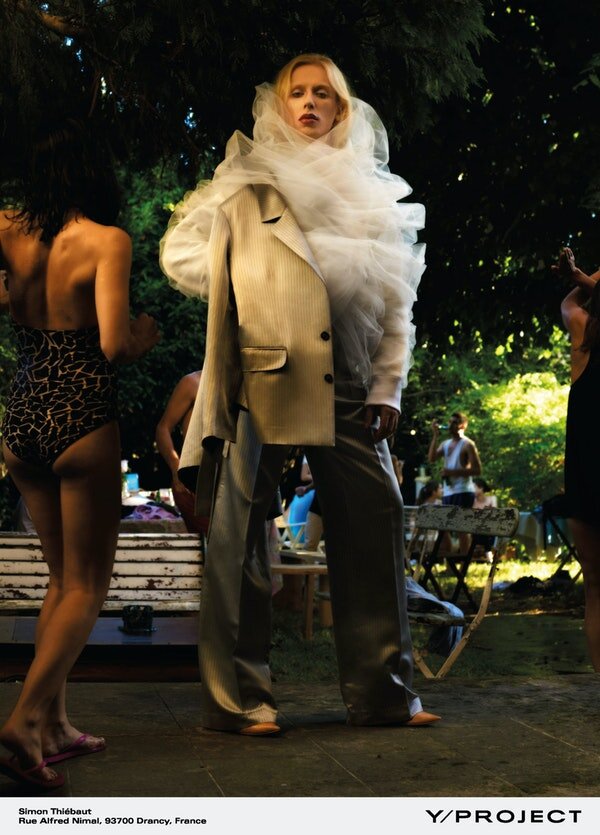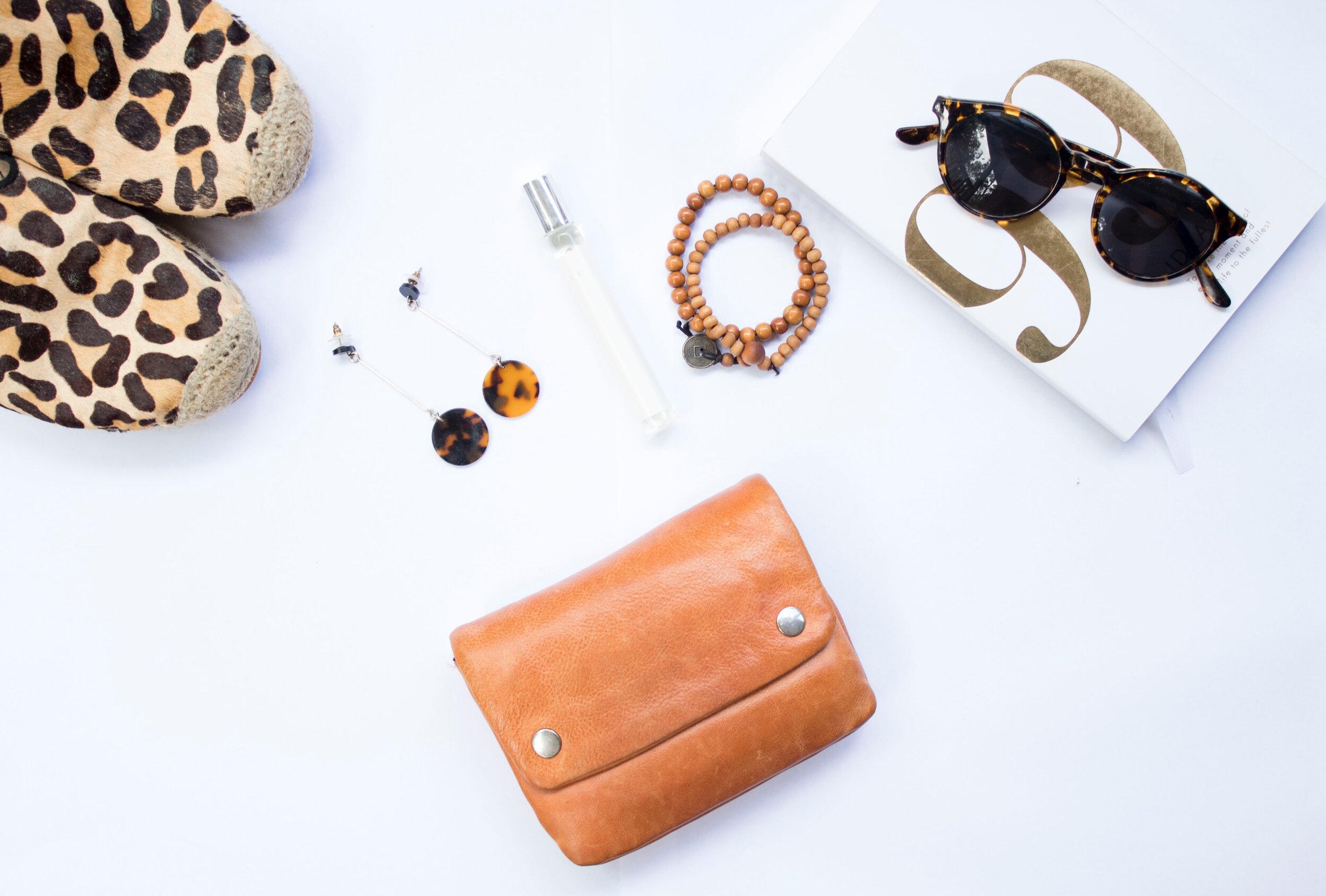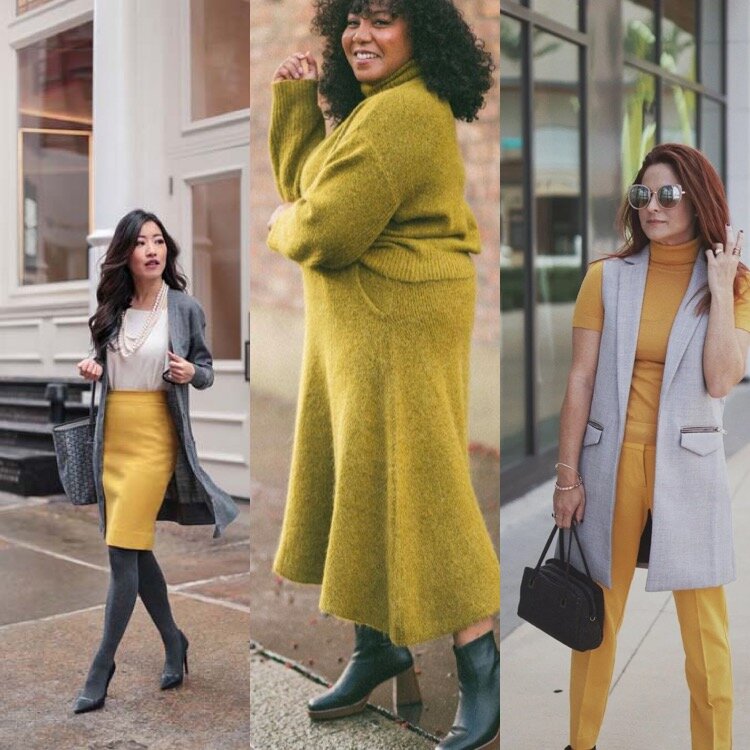How To Dramatically Reduce Your Carbon Footprint
What can you do to reduce your carbon footprint and live a more eco-conscious life?

How much better would the world be if everyone focused on reducing their carbon footprint? Don’t worry about other people, what if we all focused on ourselves and our habits and lowered our carbon footprints? You don’t have to be an environmental expert to realize the world would be in a much better place.
What can you do to reduce your carbon footprint and live a more eco-conscious life? It’s easy to believe that this is an outrageously difficult thing to do and you have to live off the grid on your own self sustaining farm. Realistically, it’s very simple, and you only need to follow a few steps:
Try to recycle as much as possible
Reusing things and recycling packaging is the easiest way to drastically lower your carbon footprint. When you buy something, check to see if the packaging can be recycled once you’ve used the product. You’ll be amazed at how many things can actually be recycled these days. Not only that, but there’s almost always a recyclable alternative to something that can’t be recycled. Even drums of fuel have an alternative in fuel in a box that has recyclable packaging. Minimize the amount of waste you produce, and you will minimize your negative impact on the environment.
Use your car less
Stop using your car for every single journey you take. Walk places, get a bike and cycle, then keep your car for essential journeys. We’re talking long-distance journeys or instances where walking or cycling aren’t possible. Even if you don’t drive for one day a week, that adds up! Gradually decrease your driving time, and you lower the carbon emissions put into the atmosphere. It’s really not that hard - or you could trade in our current car for an electric one. Granted, this is a more dramatic change, but it will 100% be worth it in the long run.
Be more energy-conscious
Be honest, do you think about your energy usage? Do you ever look at your house and consider whether or not you’re wasting energy? Most of you probably don’t think about it, but you should. That’s not a criticism, it’s just a fact. We always leave appliances on or do little things that mean we use more energy than required. During the winter, if you close your windows and put on some thick clothing, you can afford to keep your heating off for longer or put it at a lower temperature. In the summer, you can open your windows wide to let fresh air in, negating the need for your air-con to be on. Make subtle changes to your energy habits - like turning lights off - and you will see an instant change. Start today, then check your energy bill next month. The difference between it and your previous bills will be staggering.
In conclusion, reducing your carbon footprint is hardly a challenge. All you have to do is reduce waste and recycle more, cut down on your driving time, and be more energy-efficient. Three very simple changes that make you a greener person.
Being a black gay creative for me feels liberating but at the same time there’s pressure. Pressure in needing to express yourself to a white society, that you are enough; what feels like having to explain my existence. having to explain why who I am and the art I produce is more than a hyper sexual view, but just what it is, art - expression, my expression.
Summer is here and it’s important for every woman to feel beautiful in their own skin. Support these amazing companies that offer some beautiful swimwear pieces that will leave you feeling confident and vibrant.
It's always been important to support black designers, but amid a pandemic and sociopolitical crisis, these black artists and business owners need your support now more than ever!
While people have shown concern for the rapper, others have taken the opportunity to make jokes about the incident. Within the last couple of months, the topic of how Black women are marginalized in society has become more prevalent.
The sudden worldwide shift to Digital Fashion Weeks has engendered confusion and ambivalence among designers and fashion brands, particularly in regards to the content of their promotional videos.
After witnessing the backlash from Simone Biles Vogue cover I had to sit aside and ponder: Why is it so challenging for some photographers to capture the beauty of black skin/people? Our undertones, our glow, even the texture of our hair. So, like always I went looking for methods to best capture dark skin.
This spicy blackberry and plum sauce recipe was a push for something different and will now be my go to condiment for the summer season.
Black women die at a rate three times higher than white women when giving birth. The death of Sha-Asia Washington has shown the racial disparities Black women face in childbirth.
Shoot for the Stars Aim for the Moon is the first posthumous album to reach No. 1 since 2018. Pop Smoke and XXXTentacion are two of the four hip-hop artists with posthumous No. 1s. They follow The Notorious B.I.G. and 2Pac, who each have three posthumous leaders. R.I.P to the Woo.
Time to Take a Stand for Garment Workers!
Although we all rely on fast-fashion brands like H&M, Forever21 or Fashion Nova, we all might be forgetting how these brands manage to make all these garments and accessories for such affordable prices.

Although we all rely on fast-fashion brands like H&M, Forever21, or Fashion Nova, we all might be forgetting how these brands manage to make all these garments and accessories for such affordable prices. These brands depend on large factories or “sweatshops” in order to keep racks filled in their hundreds of stores and online. In Bangladesh alone, there are over 4,800 garment factories whose workforce is predominantly women. Often these factories have terrible conditions that are not safe, leading to job injuries or factory fires. Garment workers in these factories are also paid way less than a livable wage. Working long 14 to 16-hour shifts for less than 3000 takas (approximately $35USD) a month.
There are many alternatives to fast fashion brands for fashionable and affordable clothing. And by buying elsewhere we are standing in solidarity with the garment workers all over the world that face unjust conditions and pay. One alternative to fast fashion is thrifting. Stores like Plato’s Closet and Buffalo Exchange are an example of chain retailers that buy and sell trendy clothes. I live in Upstate New York so there aren’t many of these chains around but there are many local thrift shops that can offer you the same experience. As online fashion continues to grow, so does the resale market. Apps like Poshmark, Thredup, or Letgo allow you to shop from home with a wider variety. These alternatives are also environmentally friendly, ensuring that no clothing goes to waste.

During my research, I also searched for Fair Trade retailers. Fair Trade certified companies create their products in factories that have safe working conditions and pay a fair wage for the jobs being done. Some well known Fair Trade certified companies are OBEY and J. Crew. I discovered a brand named Pact that offers athletic and casual wear as well.
We all have to take our stand to ensure garment workers are working in safe environments and getting fair wages. Here’s a link to a petition to sign which is only the first of many steps to make changes
Photo Cred: 1000logos.com
Report: Lauren Tucker
At the rise of Covid-19 many of us first questioned the timeline of fashion week and would we see the regular calendar continue - the question weighed over many of us for months! It was refreshing to see design houses and designers across the globe take advantage of the uncertainty and plow into production mode - thus my interest in Jerri Reid New York - The Black Designer based in Brooklyn New York wow’d instagram with his latest collection paying homage to the Black Is King film which debuted earlier this year in July. I was taken aback at quick of a turn round the young designer produced and released his well crafted designs reflecting some of the films most memorable moments.
Being a black gay creative for me feels liberating but at the same time there’s pressure. Pressure in needing to express yourself to a white society, that you are enough; what feels like having to explain my existence. having to explain why who I am and the art I produce is more than a hyper sexual view, but just what it is, art - expression, my expression.
Summer is here and it’s important for every woman to feel beautiful in their own skin. Support these amazing companies that offer some beautiful swimwear pieces that will leave you feeling confident and vibrant.
It's always been important to support black designers, but amid a pandemic and sociopolitical crisis, these black artists and business owners need your support now more than ever!
While people have shown concern for the rapper, others have taken the opportunity to make jokes about the incident. Within the last couple of months, the topic of how Black women are marginalized in society has become more prevalent.
The sudden worldwide shift to Digital Fashion Weeks has engendered confusion and ambivalence among designers and fashion brands, particularly in regards to the content of their promotional videos.
After witnessing the backlash from Simone Biles Vogue cover I had to sit aside and ponder: Why is it so challenging for some photographers to capture the beauty of black skin/people? Our undertones, our glow, even the texture of our hair. So, like always I went looking for methods to best capture dark skin.
This spicy blackberry and plum sauce recipe was a push for something different and will now be my go to condiment for the summer season.
Black women die at a rate three times higher than white women when giving birth. The death of Sha-Asia Washington has shown the racial disparities Black women face in childbirth.
Shoot for the Stars Aim for the Moon is the first posthumous album to reach No. 1 since 2018. Pop Smoke and XXXTentacion are two of the four hip-hop artists with posthumous No. 1s. They follow The Notorious B.I.G. and 2Pac, who each have three posthumous leaders. R.I.P to the Woo.
To be black and well can mean a lot of things, but should definitely include #Skincare #Meditation #BlackReading among many other things, daily! #BlackLivesMatter #HealthAndWellness #AmplifyBlackVoices
Ib Kamara Celebrates "Future, Community, Beauty, and Blackness" in Browns' "Family Affair"
What we wear should make us feel good, especially for our moms to be. Finding the perfect pair of jeans and tops can be tough, and for pregnant women, even harder. Read more to see some great places to shop tha
Ah, fall! The season of pumpkin spice, rustling leaves, and...refreshing your fashion game! Let's face it: While we adore our comfy sweaters and jeans, it’s the accessories that truly make or break our autumn outfits.
Accessories are a simple way to add some interest to your outfits. Whether you want to refresh your style, or just to add a pop of something extra, getting your accessories right can lift an outfit, and make you look more put-together, more stylish, or more fun.
Are you thinking about buying gifts for the special girl in your life? Whether you’re purchasing lovely presents for your friend, your partner, or your wife, we think you should definitely consider some wonderful fashionable choices. Here are some of the best possibilities that the special girl in your life is sure to love and appreciate.
2021 will be a wild ride for fashion lovers and style enthusiasts everywhere. With us still being in the middle of a pandemic and changes are happening with the way consumers shop, it will definitely give way to how differently people dress and style themselves. Here are a few trend predictions that may give way in 2021.
Fashion lovers and style enthusiasts rejoice. The Pantone’s Color of the Year for 2021 is here and not only did they announce one color but two! The two colors selected will be Ultimate Gray (PANTONE 17-5104) and Illuminating (PANTONE 13-0647) as the shades for Pantone's Color of the Year 2021. According to Teen Vogue, the last time Pantone announced two colors for color of the year was back in 2016.
Diarra Bousso’s experiences as a mathematician, artisan and former Wall Street Trader have led to the creation of Diarrablu - her lifestyle brand. Her designs showcase her culture with every detail and piece - it tells a story.
Developing your sense of style is an essential part of expressing yourself through your clothing.
The effects of a nationwide quarantine have devastated the fashion label Cushnie to the point at which its closure was made official in late October. The tragic end to one of the rare high-fashion brands in America helmed by a black woman brings into question the industry's promises to employ more racially diverse talent.
In these months of solitude, the bored masses have switched on to Netflix to help them escape the mundane feeling of the lockdown. This constant tuning in is no new feeling to teenagers, whose viewership has created an entirely new genre of melodramatic “teen” shows and movies. While I binged (and rebinged) these shows, I became increasingly interested in the patterns of dress. As a fashion zealot, I tend to fixate on styling within any form of media - I get excited by fresh perspectives in fashion. Especially when it is portrayed through a young character’s style. Sadly,
New York based-label Rowing Blazers is commemorating the style of the late Princess Diana for the Fall/Winter 2020 collection. Some of Diana’s most notable looks, as well as other influenced pieces, are featured in the 80s inspired collection.
Sustainable Y/Project
A brand already lauded for its inversion of gender norms, Y/Project is now making the revolutionary shift towards more sustainable products.

The cancellation of the Paris Spring/Summer 2021 menswear shows has not stopped the Parisian high-fashion label Y/Project from continuing to innovate. A brand already lauded for its inversion of gender norms, Y/Project is now making the revolutionary shift towards more sustainable products. Y/Project’s “Evergreen Collection” is a recreation of its most famous looks, each of them constructed entirely of environmentally-friendly materials such as organic and recycled fabrics. Additionally, the brand plans to use a percentage of the collection’s proceeds for ecological philanthropy.

Moving forward, the Evergreen collection will be sold each season with new pieces added monthly. The eco-friendly ensemble has already been featured in Y/Project’s SS21 collection overall, and it will be sold in stores and on the brand’s website later this year. The mastermind behind these changes is none other than Y/Project creative director Glenn Martens, who has been revitalizing the brand since 2013. His eccentric deconstructions of masculinity and femininity in his works have earned Y/Project a multitude of accolades, including the coveted 2017 ANDAM Grand Prize. Now he has expanded his horizons toward sustainability, declaring, “We have the luxury of time to think, which entitles us a responsibility. Y/Project wants to take part in the change, building a better future.”
Photo credit: https://www.yproject.fr/page/about
Report: Nia Hunt
At the rise of Covid-19 many of us first questioned the timeline of fashion week and would we see the regular calendar continue - the question weighed over many of us for months! It was refreshing to see design houses and designers across the globe take advantage of the uncertainty and plow into production mode - thus my interest in Jerri Reid New York - The Black Designer based in Brooklyn New York wow’d instagram with his latest collection paying homage to the Black Is King film which debuted earlier this year in July. I was taken aback at quick of a turn round the young designer produced and released his well crafted designs reflecting some of the films most memorable moments.
Being a black gay creative for me feels liberating but at the same time there’s pressure. Pressure in needing to express yourself to a white society, that you are enough; what feels like having to explain my existence. having to explain why who I am and the art I produce is more than a hyper sexual view, but just what it is, art - expression, my expression.
Summer is here and it’s important for every woman to feel beautiful in their own skin. Support these amazing companies that offer some beautiful swimwear pieces that will leave you feeling confident and vibrant.
It's always been important to support black designers, but amid a pandemic and sociopolitical crisis, these black artists and business owners need your support now more than ever!
While people have shown concern for the rapper, others have taken the opportunity to make jokes about the incident. Within the last couple of months, the topic of how Black women are marginalized in society has become more prevalent.
The sudden worldwide shift to Digital Fashion Weeks has engendered confusion and ambivalence among designers and fashion brands, particularly in regards to the content of their promotional videos.
After witnessing the backlash from Simone Biles Vogue cover I had to sit aside and ponder: Why is it so challenging for some photographers to capture the beauty of black skin/people? Our undertones, our glow, even the texture of our hair. So, like always I went looking for methods to best capture dark skin.
This spicy blackberry and plum sauce recipe was a push for something different and will now be my go to condiment for the summer season.
Black women die at a rate three times higher than white women when giving birth. The death of Sha-Asia Washington has shown the racial disparities Black women face in childbirth.
Shoot for the Stars Aim for the Moon is the first posthumous album to reach No. 1 since 2018. Pop Smoke and XXXTentacion are two of the four hip-hop artists with posthumous No. 1s. They follow The Notorious B.I.G. and 2Pac, who each have three posthumous leaders. R.I.P to the Woo.
Ah, fall! The season of pumpkin spice, rustling leaves, and...refreshing your fashion game! Let's face it: While we adore our comfy sweaters and jeans, it’s the accessories that truly make or break our autumn outfits.
Accessories are a simple way to add some interest to your outfits. Whether you want to refresh your style, or just to add a pop of something extra, getting your accessories right can lift an outfit, and make you look more put-together, more stylish, or more fun.
Are you thinking about buying gifts for the special girl in your life? Whether you’re purchasing lovely presents for your friend, your partner, or your wife, we think you should definitely consider some wonderful fashionable choices. Here are some of the best possibilities that the special girl in your life is sure to love and appreciate.
2021 will be a wild ride for fashion lovers and style enthusiasts everywhere. With us still being in the middle of a pandemic and changes are happening with the way consumers shop, it will definitely give way to how differently people dress and style themselves. Here are a few trend predictions that may give way in 2021.
Fashion lovers and style enthusiasts rejoice. The Pantone’s Color of the Year for 2021 is here and not only did they announce one color but two! The two colors selected will be Ultimate Gray (PANTONE 17-5104) and Illuminating (PANTONE 13-0647) as the shades for Pantone's Color of the Year 2021. According to Teen Vogue, the last time Pantone announced two colors for color of the year was back in 2016.
Diarra Bousso’s experiences as a mathematician, artisan and former Wall Street Trader have led to the creation of Diarrablu - her lifestyle brand. Her designs showcase her culture with every detail and piece - it tells a story.
Developing your sense of style is an essential part of expressing yourself through your clothing.
The effects of a nationwide quarantine have devastated the fashion label Cushnie to the point at which its closure was made official in late October. The tragic end to one of the rare high-fashion brands in America helmed by a black woman brings into question the industry's promises to employ more racially diverse talent.
In these months of solitude, the bored masses have switched on to Netflix to help them escape the mundane feeling of the lockdown. This constant tuning in is no new feeling to teenagers, whose viewership has created an entirely new genre of melodramatic “teen” shows and movies. While I binged (and rebinged) these shows, I became increasingly interested in the patterns of dress. As a fashion zealot, I tend to fixate on styling within any form of media - I get excited by fresh perspectives in fashion. Especially when it is portrayed through a young character’s style. Sadly,
New York based-label Rowing Blazers is commemorating the style of the late Princess Diana for the Fall/Winter 2020 collection. Some of Diana’s most notable looks, as well as other influenced pieces, are featured in the 80s inspired collection.
This New Retail Store Sells Only Consciously-Made Clothes
American Eagle's newest brand, a brick-and-mortar store that sells only consciously-made clothes

As the world becomes more socially aware, brands are beginning to cater to an activism-centered consumer base. This past week, American Eagle Outfitters Inc. announced it was branching out from apparel brands by launching a retail store named Unsubscribed. Unsubscribed is set to be a brick-and-mortar apparel and accessories retail store with only one location: 73 Main Street, East Hampton, New York. Depending on Unsubscribed’s success, others may follow.
Unsubscribed promises to promote quality over quantity, unlike the fast fashion its sister brands use. Fast fashion is a term that describes companies who capture short-lasting fashion trends and quickly produce cheap, unsustainable clothing to match. Unsubscribed is the fourth company in the American Eagle Outfitters Inc. portfolio, following Aerie, Todd Snyder, and American Eagle.

Unsubscribed is branching out to feature consciously-made garments, many of which were created by third party retailers. Touting their “slow fashion” mission, the company plans to feature only two annual collections. Brands such as Indigo Africa, Boyish, Veja, and Melissa Joy Manning will also stock the store, in addition to Unsubscribed’s private label. It’s a remarkable switch from American Eagle Outfitters’ previous brands.
Though it has been rather elusive on social media thus far, Unsubscribed is creating a website that will be up shortly. The website, however, will not sell products online as part of its deviation from fast fashion. It will instead feature content and apparel from the brand. You can also find the company at @Unsubscribed on Instagram. Be sure to give them a follow!
Photo Credit: @Unsubscribed on Instagram and Women's Wear Daily
Report: Rachel Attar
At the rise of Covid-19 many of us first questioned the timeline of fashion week and would we see the regular calendar continue - the question weighed over many of us for months! It was refreshing to see design houses and designers across the globe take advantage of the uncertainty and plow into production mode - thus my interest in Jerri Reid New York - The Black Designer based in Brooklyn New York wow’d instagram with his latest collection paying homage to the Black Is King film which debuted earlier this year in July. I was taken aback at quick of a turn round the young designer produced and released his well crafted designs reflecting some of the films most memorable moments.
Being a black gay creative for me feels liberating but at the same time there’s pressure. Pressure in needing to express yourself to a white society, that you are enough; what feels like having to explain my existence. having to explain why who I am and the art I produce is more than a hyper sexual view, but just what it is, art - expression, my expression.
Summer is here and it’s important for every woman to feel beautiful in their own skin. Support these amazing companies that offer some beautiful swimwear pieces that will leave you feeling confident and vibrant.
It's always been important to support black designers, but amid a pandemic and sociopolitical crisis, these black artists and business owners need your support now more than ever!
While people have shown concern for the rapper, others have taken the opportunity to make jokes about the incident. Within the last couple of months, the topic of how Black women are marginalized in society has become more prevalent.
The sudden worldwide shift to Digital Fashion Weeks has engendered confusion and ambivalence among designers and fashion brands, particularly in regards to the content of their promotional videos.
After witnessing the backlash from Simone Biles Vogue cover I had to sit aside and ponder: Why is it so challenging for some photographers to capture the beauty of black skin/people? Our undertones, our glow, even the texture of our hair. So, like always I went looking for methods to best capture dark skin.
This spicy blackberry and plum sauce recipe was a push for something different and will now be my go to condiment for the summer season.
Black women die at a rate three times higher than white women when giving birth. The death of Sha-Asia Washington has shown the racial disparities Black women face in childbirth.
Shoot for the Stars Aim for the Moon is the first posthumous album to reach No. 1 since 2018. Pop Smoke and XXXTentacion are two of the four hip-hop artists with posthumous No. 1s. They follow The Notorious B.I.G. and 2Pac, who each have three posthumous leaders. R.I.P to the Woo.
To be black and well can mean a lot of things, but should definitely include #Skincare #Meditation #BlackReading among many other things, daily! #BlackLivesMatter #HealthAndWellness #AmplifyBlackVoices
Ah, fall! The season of pumpkin spice, rustling leaves, and...refreshing your fashion game! Let's face it: While we adore our comfy sweaters and jeans, it’s the accessories that truly make or break our autumn outfits.
Accessories are a simple way to add some interest to your outfits. Whether you want to refresh your style, or just to add a pop of something extra, getting your accessories right can lift an outfit, and make you look more put-together, more stylish, or more fun.
Are you thinking about buying gifts for the special girl in your life? Whether you’re purchasing lovely presents for your friend, your partner, or your wife, we think you should definitely consider some wonderful fashionable choices. Here are some of the best possibilities that the special girl in your life is sure to love and appreciate.
2021 will be a wild ride for fashion lovers and style enthusiasts everywhere. With us still being in the middle of a pandemic and changes are happening with the way consumers shop, it will definitely give way to how differently people dress and style themselves. Here are a few trend predictions that may give way in 2021.
Fashion lovers and style enthusiasts rejoice. The Pantone’s Color of the Year for 2021 is here and not only did they announce one color but two! The two colors selected will be Ultimate Gray (PANTONE 17-5104) and Illuminating (PANTONE 13-0647) as the shades for Pantone's Color of the Year 2021. According to Teen Vogue, the last time Pantone announced two colors for color of the year was back in 2016.
Diarra Bousso’s experiences as a mathematician, artisan and former Wall Street Trader have led to the creation of Diarrablu - her lifestyle brand. Her designs showcase her culture with every detail and piece - it tells a story.
Developing your sense of style is an essential part of expressing yourself through your clothing.
The effects of a nationwide quarantine have devastated the fashion label Cushnie to the point at which its closure was made official in late October. The tragic end to one of the rare high-fashion brands in America helmed by a black woman brings into question the industry's promises to employ more racially diverse talent.
In these months of solitude, the bored masses have switched on to Netflix to help them escape the mundane feeling of the lockdown. This constant tuning in is no new feeling to teenagers, whose viewership has created an entirely new genre of melodramatic “teen” shows and movies. While I binged (and rebinged) these shows, I became increasingly interested in the patterns of dress. As a fashion zealot, I tend to fixate on styling within any form of media - I get excited by fresh perspectives in fashion. Especially when it is portrayed through a young character’s style. Sadly,
New York based-label Rowing Blazers is commemorating the style of the late Princess Diana for the Fall/Winter 2020 collection. Some of Diana’s most notable looks, as well as other influenced pieces, are featured in the 80s inspired collection.
Green House - The New Fashion House
How Sustainability will become the focus of many brands - and it should be - but will it cost the consumer?

via Pinterest
Perhaps using the word “Sustainability” has been a kind gesture or nod to the fashion industry for progressive attempts to lessen the damage it causes on the environment - however, if we’re going to be transparent about it, our beloved industry is responsible for nearly 35% of the microplastic flows into the ocean and outweighs the carbon footprint of international flights and shopping combined
42 percent of millennials say they want to know what goes into products and how they are made before they buy, according to The Business of Fashion and McKinsey & Company’s annual State of Fashion report.
But longer-term, the trend raises a central tension for many brands: in an era of growing consciousness and concern about the strain mass consumption is placing on the planet and its resources, can brands really be sustainable and continue to grow at the same time?
By definition - Sustainability :
the ability to be maintained at a certain rate or level.
"the sustainability of economic growth"
avoidance of the depletion of natural resources in order to maintain an ecological balance."the pursuit of global environmental sustainability"
According to dictionary.com
It's the ecological balance of the fashion world that has the new generation of “fashionistas” up in arms about how we consume fashion and how we produce it.
The understanding of sustainable fashion often begins with how materials are sourced, who’s being employed to work in the factories, how are they being compensated, how often we consume products, and how can we lessen the footprint (pollution) of fashion in the world.
Let’s break this down into three questions:
What Is Sustainable Fashion? Who Does It affect? Will It Cost Companies To Change?
Understanding Sustainable Fashion
- Consideration and adaptation to environmental and socio-economic standards when
creating a product. This includes all stages of the product's life, from the creation of the design to the final sale and ultimate use.
- Environmental factors: conserving natural resources, recycling, and using
renewable energy sources
- Socio-economic factors: workers conditions and rights - Intended for long term use - clothes made sustainably from naturally occurring fibers last
longer than clothes made from cheap synthetic materials. The longer the clothes last, the less clothes that end up in the landfill and the less clothing being produced in the long run.
Who Does Sustainable Fashion Affect
- Workforce: impacts the workers throughout the supply chain: Sustainable fashion focuses on minimizing the use of “sweatshops” within the fashion industry. This means improving working conditions and offering fair wages for all workers starting at the bottom on up.
- Consumer: naturally the consumer receives a higher grade quality of product, however, that same consumer will also pay a higher price to obtain a more “earth friendly” product.
What is the Cost of Producing Sustainable Fashion
- Sustainable fashion faces higher costs in almost every aspect of the supply chain as
opposed to their non-economically conscious competitors.
- Fabrics made from natural resources cost more than those made of synthetic materials.
They have to be farmed sustainably - and that means fair wages and environmentally friendly methods.
- Paying all workers fair wages significantly raises the cost of production. Also, because
the clothes are made to last, more time is put into making each garment and less products are made per payable hour.
- Sustainable fashion brands often buy in small quantities to avoid waste and because of
their smaller customer base. This is more expensive than buying in bulk in two ways: (1) manufacturers often give discounts to companies buying in bulk and (2) shipping costs are higher when multiple small orders are made instead of just one large one.
With the current COVID -19 crisis management cycles in motion for various industry - the one topic on everyone's “List Of Do’s” is to create a plan of execution to bounce back - and that begins with the message of “Conscientious Business” - companies are aware that they not only have to speak to what's happening, but they have to speak to the future - and that can be difficult when the future is clouded by financial lost and potential increase in debt with no real cash flow currently.
Despite Sustainability being an actual concern and legitimate focus, companies will and have simply “lip serviced” this necessary shift in toward more conscious fashion.
Companies speaking about the change and promising change can be seen as a marketing tool - or PR move to maintain their consumer, and intently grasp new patrons. Either way, the cause is acknowledged, but so much more has to be done, and the hope is, it will be done.
As we slowly maneuver toward a NEW NORM, it's our hope that we will see a lot of the changes promised by the fashion world.
At the rise of Covid-19 many of us first questioned the timeline of fashion week and would we see the regular calendar continue - the question weighed over many of us for months! It was refreshing to see design houses and designers across the globe take advantage of the uncertainty and plow into production mode - thus my interest in Jerri Reid New York - The Black Designer based in Brooklyn New York wow’d instagram with his latest collection paying homage to the Black Is King film which debuted earlier this year in July. I was taken aback at quick of a turn round the young designer produced and released his well crafted designs reflecting some of the films most memorable moments.
Being a black gay creative for me feels liberating but at the same time there’s pressure. Pressure in needing to express yourself to a white society, that you are enough; what feels like having to explain my existence. having to explain why who I am and the art I produce is more than a hyper sexual view, but just what it is, art - expression, my expression.
Summer is here and it’s important for every woman to feel beautiful in their own skin. Support these amazing companies that offer some beautiful swimwear pieces that will leave you feeling confident and vibrant.
It's always been important to support black designers, but amid a pandemic and sociopolitical crisis, these black artists and business owners need your support now more than ever!
While people have shown concern for the rapper, others have taken the opportunity to make jokes about the incident. Within the last couple of months, the topic of how Black women are marginalized in society has become more prevalent.
The sudden worldwide shift to Digital Fashion Weeks has engendered confusion and ambivalence among designers and fashion brands, particularly in regards to the content of their promotional videos.
After witnessing the backlash from Simone Biles Vogue cover I had to sit aside and ponder: Why is it so challenging for some photographers to capture the beauty of black skin/people? Our undertones, our glow, even the texture of our hair. So, like always I went looking for methods to best capture dark skin.
This spicy blackberry and plum sauce recipe was a push for something different and will now be my go to condiment for the summer season.
Black women die at a rate three times higher than white women when giving birth. The death of Sha-Asia Washington has shown the racial disparities Black women face in childbirth.
Shoot for the Stars Aim for the Moon is the first posthumous album to reach No. 1 since 2018. Pop Smoke and XXXTentacion are two of the four hip-hop artists with posthumous No. 1s. They follow The Notorious B.I.G. and 2Pac, who each have three posthumous leaders. R.I.P to the Woo.








































At the rise of Covid-19 many of us first questioned the timeline of fashion week and would we see the regular calendar continue - the question weighed over many of us for months! It was refreshing to see design houses and designers across the globe take advantage of the uncertainty and plow into production mode - thus my interest in Jerri Reid New York - The Black Designer based in Brooklyn New York wow’d instagram with his latest collection paying homage to the Black Is King film which debuted earlier this year in July. I was taken aback at quick of a turn round the young designer produced and released his well crafted designs reflecting some of the films most memorable moments.